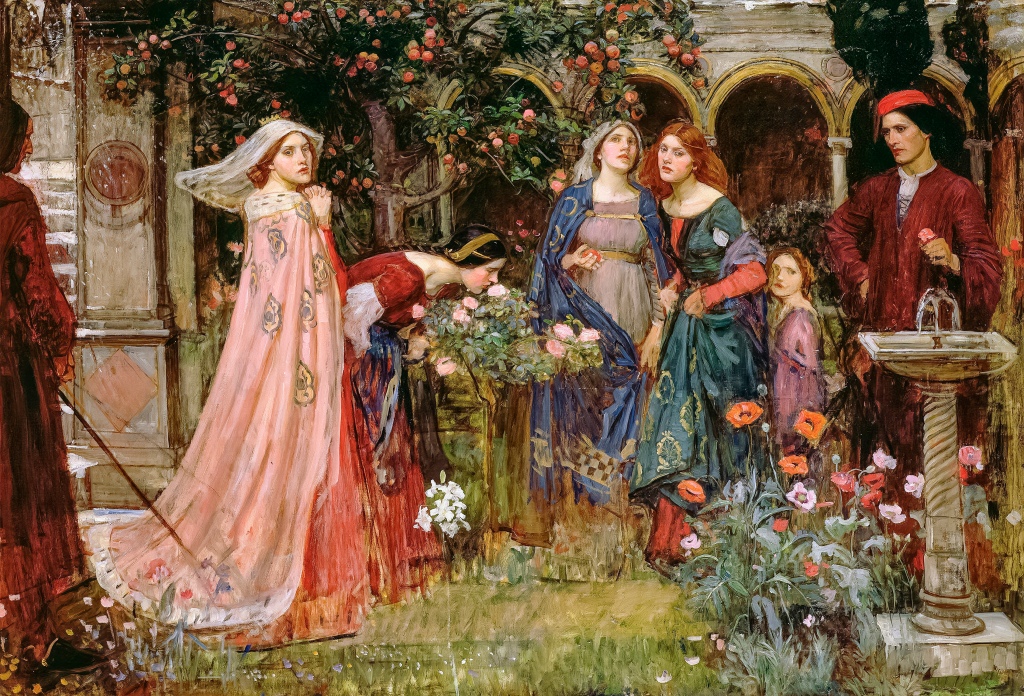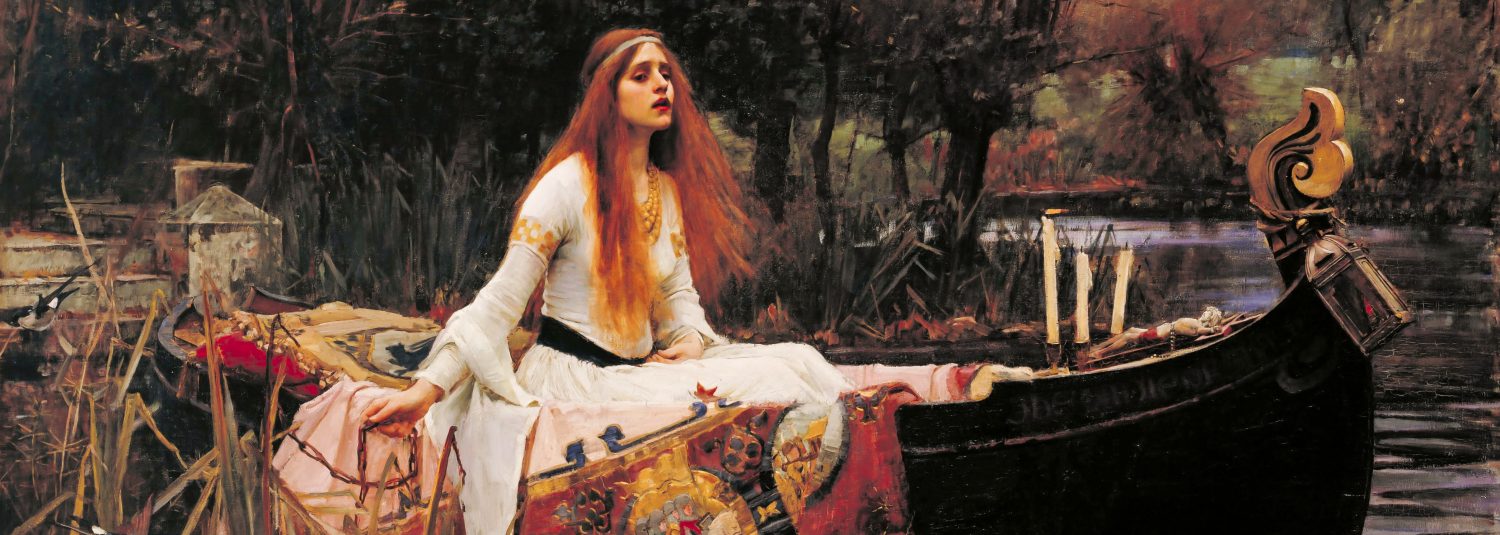
The Enchanted Garden illustrates a scene from Boccaccio’s ‘Decameron’. This tells the tale of a group of young people who, fleeing from the plague in 14th century Florence, spend ten days isolated in the country. Every day a different member of the group was chosen to be king or queen, and gained authority over the group for that day alongside the responsibility for relating a tale to entertain them.
‘The Enchanted Garden’ relates an episode from one of these stories. Another painting by Waterhouse, also exhibited in the Lady Lever Art Gallery entitled ‘A Tale from the Decameron’, (1916) illustrates the group of young men and women telling their tales.
The story behind the painting recounts an episode from Ansaldo’s pursuit of Dianora. Although already married, in a moment of recklessness Dianora says she will yield to Ansaldo if he achieves the impossible and produces, in January, a garden with the flowers, foliage and fruits of May. As the painting demonstrates, with the help of a magician Ansaldo succeeds in his task, and creates a spring garden despite the snow that was falling outside in the ‘real world’. Dianora is now faced with a difficult situation, but decides to confess all to her husband, Gilberto. Gilberto suggests she must comply with Ansaldo’s desires, however, moved by Dianora’s honesty to her husband, Ansaldo releases her from her reckless contract.
The artist’s death in February 1917 left the painting uncompleted and it was a tribute to Waterhouse that it was displayed in the Academy later that year, despite its unfinished state. In some ways the subject of the painting mirrors the artists own life. Just as Ansaldo’s garden created an idyll of spring flowers in the depth of winter, Waterhouse created a haven of warmth in the winter of his life by spending his time and energy immersed in this painting.
The painting is rooted firmly in the realms of the imagination. Waterhouse writer Anthony Hobson suggests that it is his love of legend and mystery, unerring sense of composition and the instinct for the moment in the story at which everything stands still for our contemplation that defines Waterhouse’s work.
Liverpool was one of Waterhouse’s main exhibition centres and his work was regularly exhibited in the Walker from 1879 until the year before his death. Lord Lever was one of his important patrons, particularly in the artist’s later years and purchased the painting for £500 from Waterhouse’s widow.

